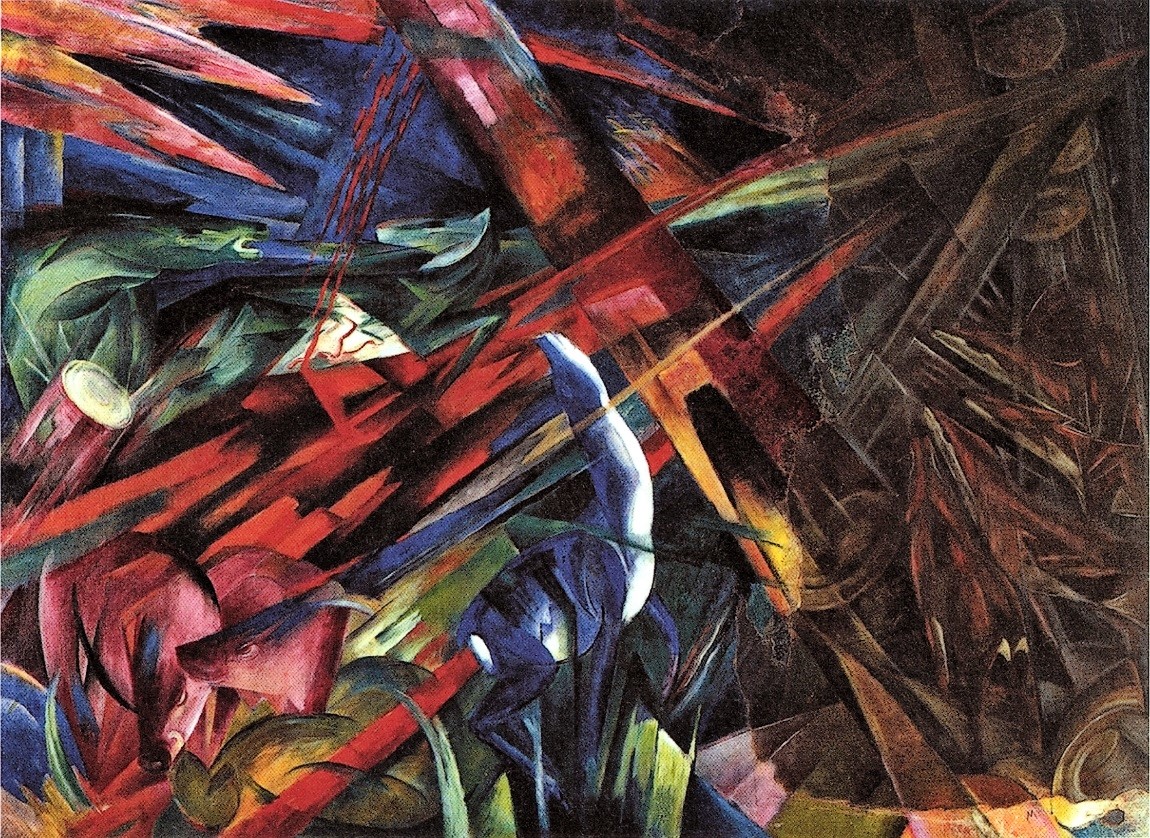Featuring Giacomo Balla (1871-1958) and contemporary Hiroshi Manabe
“Modernist art’s drive toward abstraction might not signal its withdrawal from reality so much as reality’s withdrawal from it—that is, from art’s capacity to represent a reality transformed by technology and war”
Paul Klee
Many people don’t understand modern art, why it’s so valuable, and what it’s all intended to mean. I don’t always either. It’s abstract, non-representational, seemingly referring to nothing in the real world. Between the avant-garde shapes and colors that are supposedly representing things such as the artist’s mother, or the war going on outside his studio, modern art’s intrinsic meaning seems impenetrable.
The Fate of the Animals by Franz Marc 1913

What I’ve come to understand, though, is that modern life itself is pretty abstract. As opposed to our ancestors who worked on quiet farms and lived in a comfortable daily routine, we live in a hyper-stimulated world where we see and experience new things everyday.
Lights, cars, bass, Yahoo search results: where does the stimulus end?
Exposed to mass communication, immersed in a world of changing technology, and surrounded by strangers, we live in a dynamic atmosphere which may move too quickly for us to capture it, say, in a painting.

The experience becomes so far from natural reality that human perception does not know how to deal with it, let alone how to represent it. As we are exposed to such great diversity everyday, from the world views of the people you meet or the latest news from the middle east, modern life is an immensity beyond human comprehension.

As a result, some art appears so abstract that it is almost inexplicable to the general public, and possibly to the artist himself. Modern art is defined by its incapability to capture the speed and constant stimulus of everyday life. Modern art is a reaction against the recent expectation of the human to have the efficiency of a machine, constantly processing all of the changes happening right now in the world in order to stay afloat. It’s a reaction against not being able to slow experience down,
to take time to see what it means.
Carlos Carra

"It’s ironic that many people say they don’t “get” contemporary art because, unlike Egyptian tomb painting or Greek sculpture, art made since 1960 reflects our own recent past. It speaks to the dramatic social, political and technological changes of the last 50 years, and it questions many of society’s values and assumptions—a tendency of postmodernism, a concept sometimes used to describe contemporary art. What makes today’s art especially challenging is that, like the world around us, it has become more diverse and cannot be easily defined through a list of visual characteristics, artistic themes or cultural concerns."








No comments:
Post a Comment